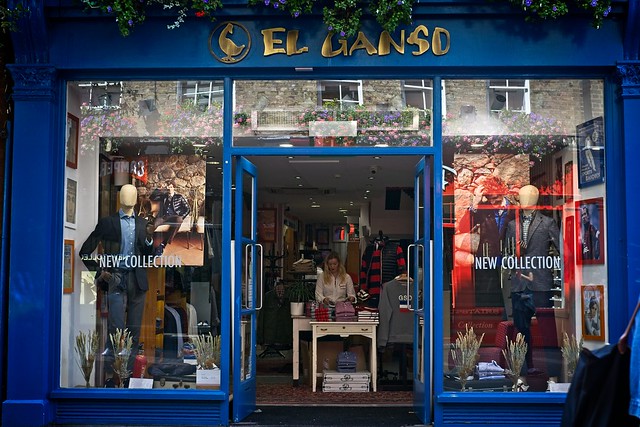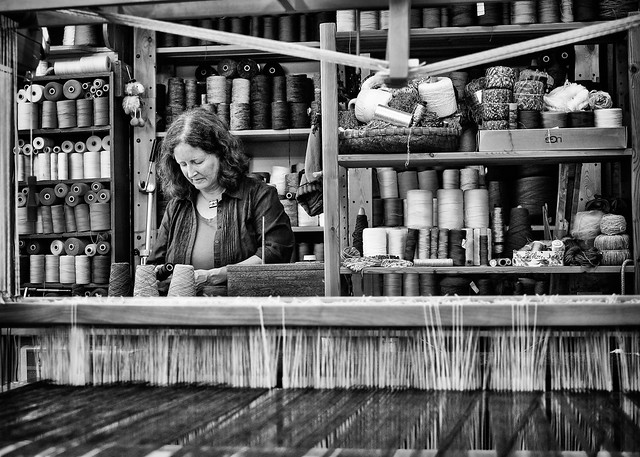Unlock the Magic in Your Story Now
Get the Free 20 questions to Ask Before Launching Your Idea workbook when you sign up for occasional updates.
Get the Free 20 questions to Ask Before Launching Your Idea workbook when you sign up for occasional updates.
Always, Sometimes, Never

Doing our best work requires us to pay attention to the things and people that energise us.
One way to do this is to consider categorising potential opportunities, projects or clients into three buckets. Always, sometimes and never.
The goal is to do more of the ‘always’ work, on the projects that both energise us and serve our mission. The ‘sometimes’ work may be taking us closer to our goals even if it isn’t in our zone of genius. And the ‘never’ work is that work that sucks our time and energy—the projects or tasks we should either avoid or delegate if they are essential.
It’s true that how we spend our days is how we end up spending our lives. We can deliberately choose to spend them wisely.
Image by Clark Young
Share this article
The Power Of A Shared Narrative
filed in Storytelling, Strategy

Many shoppers wandering the department store on Saturday are browsing. Some are buying. Most people the menswear assistant offers to help, decline. But one or two ask if a particular shirt or jumper is available in their size. The response depends. It depends on three things—the stock levels, the training the sales team received, and how the individual assistant shows up to work.
Often the assistant on duty will apologise, announcing that stock levels are low. Sometimes she will offer to check if another store has the item in the customer’s size. Rarely will she ask the customer when for and why he needs the shirt so that she can suggest an alternative or order one in his size.
It depends isn’t a recipe for great customer service. The best brands know the customer experience shouldn’t depend on who happens to be working that day. They intentionally design experiences and create scripts that match the outcome they want. And they hire people who share the company’s values and ideals—people who are intent on embodying the brand’s story.
Consistent service is a result of common goals and a shared narrative.
A good strategy depends on a great story.
Image by Garry Knight
Share this article
What Can You Learn From Your Competitors?

Karl’s been a successful financial advisor for many years. He’s at the point where he doesn’t need to advertise his services. Karl chooses the clients he wants to work with and generally only takes on new clients by referral. He’s intentionally built the kind of business he wants.
Karl will tell you that the secret of his success is down to one thing—learning from his competitors.
“I spent a lot of time paying attention to my competitors. But instead of worrying about what they excelled at, I wanted to know where they fell short. I found out what they wouldn’t do for their clients. And then I did the things they weren’t prepared to do for mine. Now, sometimes those things didn’t scale. They weren’t systems and processes I could easily automate. To an outsider that might have looked like a short-term disadvantage, but over time things that weren’t easy to replicate turned into my competitive advantage.”
It turns out that differentiation happens in the heads, but mostly in the hearts, of your customers.
What’s the story your competitor doesn’t want to tell?
Image by Abdullah Öğük
Share this article
Thank You For Your Work

Every day, we are served and nourished by others. We are supported and guided or empowered and inspired by people who have no idea how much they helped us.
What kind of companies would we build if happy, grateful customers were our goal?
What would it take to empower more customers to say thank you and mean it?
What if we created a culture that meant more people heard that their work mattered?
What difference would connecting our effort to its impact have on each and every one of us?
We can be more grateful customers and build the kind of organisations that create them on purpose.
Image by Garry Knight
Share this article
Your Company Needs A Strong Strategic Narrative
filed in Storytelling, Strategy, Success

A strategic narrative is the story that drives the choices a company makes. That narrative is the thread from which the company’s fabric—its culture and strategy are woven. Sometimes the story accidentally informs the strategy with unintended positive or sometimes, negative consequences.
It stands to reason then that we can and should intentionally leverage our narrative to achieve greater alignment and success.
The elements of a strong strategic narrative
1. Mission
Having a strong sense of purpose.
2. Values & Vision
Knowing who you are, what you stand for, who your best work is for and where you’re headed.
3. Value Creation
Understanding who your customers want to become in the presence of your product.
4. Capability
The ability to align and deliver on 1, 2 and 3.
A strong strategic narrative enables us to prioritise the opportunities, plans and behaviours that align our vision and values with our customer’s unmet needs.
Yes, we tell our story, but the story also tells us.
*Want to explore your company’s strategic narrative in more depth?
My book Story Driven will show you where to begin.
Image by Joris Louwes
Share this article
Good Stories Drive Great Strategy
filed in Storytelling, Strategy

Good stories have always driven great strategy—not the other way around.
Companies forgot this in the golden age of advertising when they began asking ad agencies what they could say to sell more products, instead of first understanding what they must say to show who they were and what they stood for.
Successful brands have a great story long before they have a grand plan.
Image by Alice Donavan Rouse
Share this article
The Power Of Brand Energy
filed in Storytelling, Strategy

Weekends are a quiet time for the two chocolate shops at the ‘Paris End’ of Melbourne’s Collins Street. During the working week, they are busy serving office workers who meet for coffee, buy gifts or want a little treat with their morning tea. On Sundays, the pace is much slower. A handful of tourists and window shoppers wander in and out to browse and enjoy chocolate samples.
It’s a good time to restock and get the shop looking good for the week to come. When it’s quiet, both shops are staffed by one or two people who are responsible for the entire customer experience. The energy they bring to their work on Sunday carries the brand.
The manager at the first shop enjoys the leisurely pace of Sundays. So much so that he sighs when customers ask questions or change their mind and looks for an excuse to close the cafe early so he can get away on time. The young girl at the second is excited to hand out free chocolate samples. She delights in telling customers about new flavours and marvels at the colours of the packaging and that the Easter eggs are all hand-wrapped.
Her eyes light up when she talks about the man—she describes as the company’s own Willy Wonka, who sits in a little office at the factory in Adelaide filled with ingredients and spices, inventing new flavours all day. ‘It’s not hard to be passionate about chocolate,’ she says. As she carefully wraps small packages.
The difference between the manager in the first shop and the sales assistant in the second is easy to see and hard to account, let alone hire for. That difference is purely the energy they bring to their work.
Brand energy builds brand equity. Passion isn’t something you can fake. It’s impossible to instruct. But when you have it people know. And when you experience it, you return to its source.
Image by Matthew
Share this article
Build Your Darlings

It’s often said that you should kill your darlings. This sentiment was first expressed by British writer Arthur Quiller-Couch in 1914 when he cautioned writers not to fall in love with their prose at the expense of the reader. Here’s what he said.
‘Whenever you feel an impulse to perpetrate a piece of exceptionally fine writing, obey it—whole-heartedly—and delete it before sending your manuscript to press. Murder your darlings.’
Quiller-Couch’s words are sometimes taken to mean that you should never fall in love with your ideas. But if you want to do work you’re proud of what alternative do you have? You must believe your work can change things for the better. I think what these words wisely caution us against is simply falling in love with the work itself, instead of being passionate about the change we hope to make.
So go ahead, build your darlings for the people you care about serving. Those people who will fall in love with how your work enables them to live the lives they want.
Image by Darwin Vegher
Share this article
Bolder, Braver, Better Marketing
filed in Marketing, Storytelling

How would you find more customers if you couldn’t use traditional marketing methods? If you couldn’t do any print, radio or TV advertising or use the digital levers we’ve become so used to relying on as a way to drive business growth. Where would you start?
My guess is you’d start with people. You’d double down on serving the customers you already had and talk with, not at, people who were not customers yet. You’d get very good at explaining what you do and how it helps your customers.
You’d become an expert at looking people in the eye. You’d be bolder, braver, better. You’d make your own magic.
It’s not rocket science, yet it’s something we’ve neglected in our digital age.
This is how most businesses marketed themselves fifty years ago. By making the best possible product, for customers they knew and cared to serve. We moved away from that brave marketing model and in many ways, that shift has been to our detriment. Our focus on efficiency and scaling has taken us further away from our customers and made us less courageous marketers.
Is your marketing mindset limiting your ability to connect with and serve your customers better?
Image by Garry Knight
Share this article
How Good Is Your Story?
filed in Story Skills, Storytelling

There’s a reason why this post about how to write a compelling about page is the most visited page on my website and has been since I wrote it almost eight years ago. It’s an ironic and universal truth, that the story we know best is the story we have the least confidence telling—at least when we sit down to write.
We fear saying the thing that nobody cares to listen to. But our fear of saying things that people hear and reject is even greater. So we play it safe and end up looking and sounding like everyone else. It’s not that we can’t tell better stories. It’s that we resist doing it for fear of not being good enough, or worse, right enough.
What’s the difference between a good story and a great story?
A good story tells.
A great story engages.
A good story informs.
A great story moves people.
A good story chronicles events.
A great story invests people in the outcome.
A good story changes how we think.
A great story changes how we feel and what we do.
You already have a good story to tell. It’s how you tell it that makes it great.
Image by x1klima